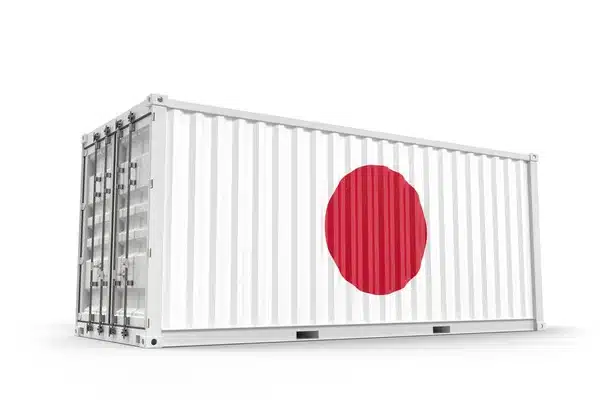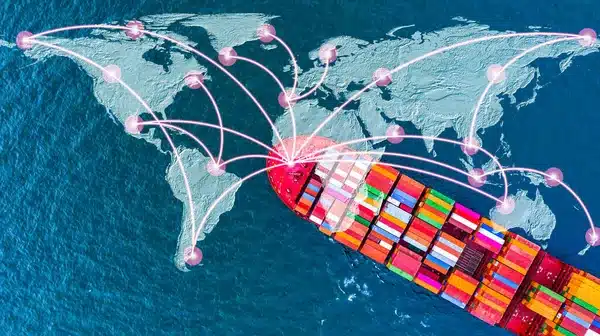China and Japan have one of the most active maritime trade routes in Asia, facilitating high trade volumes for various industries, including electronics, automobiles, machinery, and consumer goods. The geographic proximity between the two countries results in shorter transit times and frequent vessel departures, making container shipping the most efficient and cost-effective option for businesses.
Shipping costs for a 20ft or 40ft container from China to Japan depend on several factors, including the port of origin and destination, cargo type, shipping method (FCL or LCL), freight carrier, fuel surcharges, and seasonal demand. Additionally, customs clearance, handling fees, and local transportation costs play a crucial role in determining the total shipping expenses.
This guide provides a detailed breakdown of container shipping costs, transit times, major shipping routes, customs clearance procedures, and cost-saving strategies to help businesses optimize their logistics when importing or exporting goods between China and Japan.

Table of Contents
Major Shipping Routes from China to Japan
Shipping between China and Japan is primarily conducted via sea freight due to its cost-effectiveness, frequent vessel departures, and short transit times. The well-established maritime trade route ensures a steady supply chain for businesses importing and exporting goods between the two nations.
The choice of shipping route depends on port connectivity, cargo volume, and budget. While direct shipping routes offer faster delivery, some shipments may be routed through transshipment hubs like Busan (South Korea) or Hong Kong to optimize costs.
Key Shipping Routes and Transit Times
| Port of Origin (China) | Port of Destination (Japan) | Transit Time (Days) |
|---|---|---|
| Shanghai | Tokyo | 3–5 days |
| Ningbo | Osaka | 4–6 days |
| Shenzhen | Yokohama | 5–7 days |
| Qingdao | Nagoya | 4–7 days |
| Guangzhou | Kobe | 5–8 days |
| Tianjin | Fukuoka | 5–9 days |
Factors Influencing Shipping Time
- Direct vs. Transshipment Routes: Direct shipping from China to Japan takes fewer days, while cargo routed via Busan or Hong Kong may experience additional transit time (1–3 days).
- Port Congestion: Peak seasons may lead to delays at busy Japanese ports like Tokyo and Osaka.
- Customs Clearance: Proper documentation ensures smooth entry; any errors can result in delays.
Tip: Businesses with urgent shipments should opt for direct FCL (Full Container Load) shipping, while those looking for cost savings can consider LCL (Less than Container Load) consolidation or transshipment routes.

Estimated Shipping Costs for 20ft & 40ft Containers from China to Japan
Shipping rates for 20ft and 40ft containers from China to Japan fluctuate based on various factors, including distance, carrier rates, cargo weight, fuel surcharges, and seasonal demand. As of January 2025, here are estimated shipping costs for major routes:
Estimated 2025 Container Shipping Costs
| Port of Origin (China) | Port of Destination (Japan) | 20ft Container (USD) | 40ft Container (USD) |
|---|---|---|---|
| Shanghai | Tokyo | $600 – $1,000 | $1,200 – $1,600 |
| Ningbo | Osaka | $650 – $1,100 | $1,300 – $1,700 |
| Shenzhen | Yokohama | $700 – $1,200 | $1,400 – $1,800 |
| Qingdao | Nagoya | $750 – $1,250 | $1,500 – $2,000 |
| Guangzhou | Kobe | $8,00 – $1,300 | $1,600 – $2,100 |
| Tianjin | Fukuoka | $8,50 – $1,400 | $1,700 – $2,200 |
Key Factors Affecting Costs
- Distance & Route Selection – Shorter shipping routes, such as Shanghaito Tokyo, are more affordable than longer routes like Tianjinto Fukuoka.
- Container Type & Cargo Weight – Standard 20ft and 40ft containers are more economical than refrigerated (reefer) or open-top containers, which require special handling.
- Seasonal Demand – Shipping rates tend to increase during peak seasons like Chinese New Year (January–February) and major Japanese holidays.
- Port Congestion & Customs Delays – High-traffic ports such as Tokyo and Osaka may experience longer processing times, affecting final costs.
- Fuel Prices & Carrier Surcharges – Bunker fuel fluctuations can impact overall freight charges.
Tip: To get the best rates, book at least 2–4 weeks in advance and work with a trusted freight forwarder to secure competitive pricing and smooth customs clearance.
Factors Affecting Container Shipping Costs from China to Japan
The final cost of shipping a 20ft or 40ft container from China to Japan depends on several key factors. Importers should consider these factors to optimize shipping expenses and transit efficiency.
Distance & Port Selection
- Shorter Routes = Lower Costs – Routes like Shanghai → Tokyo or Ningbo → Osaka are more affordable due to lower fuel consumption and shorter transit times (3–6 days).
- Longer Routes = Higher Costs – Routes like Guangzhou → Fukuoka or Tianjin → Nagoya may have higher freight charges due to increased distance and transit times (5–9 days).
Shipping Method: FCL vs. LCL
- FCL (Full Container Load) – Recommended for bulk shipments where the entire 20ft or 40ft container is used by a single importer. More cost-effective per unit compared to LCL.
- LCL (Less than Container Load) – Suitable for smaller shipments (2–15 CBM), but higher costs per CBM due to additional handling, consolidation, and deconsolidation charges.
Cargo Weight & Type
- Heavy Cargo (e.g., machinery, auto parts, industrial equipment) – May incur higher surcharges due to weight restrictions and increased fuel consumption.
- Fragile, Perishable, or Hazardous Goods – Require special handling, temperature control, or dangerous goods permits, which increase costs.
- Refrigerated Containers (Reefers) – Used for food, pharmaceuticals, and chemicals, resulting in higher freight rates due to temperature control requirements.
Seasonal Demand & Peak Periods
Shipping costs fluctuate throughout the year based on market demand:
- Peak Seasons (Higher Rates)
- Golden Week (Japan, late April–early May)
- Chinese New Year (January–February)
- Holiday Sales Season (September–December)
- Off-Peak Seasons (Lower Rates)
- March–April, June–August – Less shipping congestion leads to cheaper freight rates and faster availability of containers.
Fuel Prices & Carrier Surcharges
- Bunker Adjustment Factor (BAF) – Fuel costs fluctuate based on global oil prices, affecting total shipping rates.
- Emergency Risk & Security Surcharges – Some carriers add war risk or emergency surcharges depending on geopolitical stability in the shipping region.
Port Congestion & Customs Delays
- Major Japanese Ports (Tokyo, Yokohama, Osaka) – Experience high container traffic, especially during peak seasons, leading to longer waiting times and additional port storage fees.
- Customs Clearance Issues – Delays may occur if documentation is incomplete or if goods require additional inspections.
Tip: To minimize costs, importers should book shipments at least 3–4 weeks in advance, opt for off-peak shipping periods, and work with an experienced freight forwarder to ensure a smooth logistics process.
FCL vs. LCL: Which Shipping Method is Right for You?
Choosing between FCL (Full Container Load) and LCL (Less than Container Load) depends on your shipment size, budget, and delivery urgency. Below is a breakdown of when to use each method.
FCL (Full Container Load)
Best for: Large shipments (15 CBM+) or high-value goods.
Advantages of FCL Shipping
- Lower Cost Per Unit – The cost per CBM is lower compared to LCL, making it more economical for bulk shipments.
- Faster Transit Times – No need for cargo consolidation or deconsolidation, reducing handling time and delays.
- Greater Security – Cargo remains sealed in a dedicated container, minimizing damage risks and handling errors.
Disadvantages of FCL Shipping
- Higher Upfront Cost – Requires paying for the entire 20ft or 40ft container, even if it’s not fully loaded.
- More Storage Space Required – Larger shipments need sufficient warehouse space for unloading and inventory storage.
Tip: FCL is the most cost-effective choice if you have 15 CBM or more of cargo. If your shipment is smaller but close to 15 CBM, upgrading to FCL may save costs compared to LCL.
LCL (Less than Container Load)
Best for: Small to medium shipments (1-15 CBM) where FCL is not necessary.
Advantages of LCL Shipping
- Lower Cost for Small Shipments – Pay only for the space used, making it ideal for businesses shipping smaller volumes.
- More Frequent Departures – LCL shipments sail regularly, offering flexibility for just-in-time inventory and smaller orders.
Disadvantages of LCL Shipping
- Longer Transit Times – Requires cargo consolidation at the origin and deconsolidation at the destination, adding extra handling time.
- Higher Cost Per CBM – Although the total cost is lower than FCL, the cost per CBM is higher due to additional handling and storage fees.
Tip: LCL is a cost-effective solution for small businesses and importers who do not need an entire container. However, if the shipment is close to 15 CBM, upgrading to FCL may be more economical.
How to Choose Between FCL and LCL?
| Factor | FCL Shipping | LCL Shipping |
|---|---|---|
| Shipment Size | 15 CBM or more | 1–15 CBM |
| Cost Efficiency | Lower per unit for large shipments | Higher per CBM but cheaper for small loads |
| Speed | Faster (No consolidation delays) | Slower (Requires consolidation) |
| Security | More secure (Sealed container) | Higher risk of damage due to shared space |
| Flexibility | Fixed container cost | Pay only for used space |
Final Recommendation:
- Choose FCL if shipping large volumes to save on cost per unit.
- Choose LCL for smaller shipments to avoid paying for unused space.
Learn more:

Customs Clearance & Import Duties in Japan
Required Documents for Importing to Japan
To ensure smooth and hassle-free customs clearance, importers must prepare the following mandatory documents:
- Bill of Lading (BOL) – Proof of cargo shipment and ownership.
- Commercial Invoice – Detailed product description, declared value, and shipper/consignee details.
- Packing List – Specifies the quantity, dimensions, and weight of each package.
- Certificate of Origin (if applicable) – Confirms where the goods were manufactured.
- Import Declaration Form – Submitted to Japan Customs to process the shipment.
- HS Code for Cargo Classification – Determines the applicable tariff rate and import regulations.
Tip: Missing or incorrect documentation can delay clearance and result in penalties. Always double-check paperwork before shipment.
Import Duties & Taxes in Japan
Japan has one of the most streamlined customs processes in Asia. However, import duties and taxes vary based on the type of cargo.
| Charge Type | Rate | Details |
|---|---|---|
| Standard Import Duties | 0% – 10% | Varies based on the HS Code and product category. |
| Consumption Tax (VAT) | 10% | Applies to most imported goods. |
| Restricted Items | Additional Licenses Required | Electronics, chemicals, food, and pharmaceuticals may require special approvals. |
How to Minimize Import Costs in Japan?
- Use FTA Benefits – Japan has Free Trade Agreements (FTAs) with China, allowing reduced or zero tariffs for certain products.
- Classify Goods Correctly – Ensure the right HS Code is used to avoid unnecessary duty charges.
- Choose DDP Shipping – Delivered Duty Paid (DDP) includes customs clearance, import duties, and taxes, simplifying the process.
Final Tip: Working with an experienced freight forwarder ensures compliance with Japan’s strict import regulations, avoiding unnecessary delays and penalties.
Why Choose Tonlexing for Container Shipping from China to Japan?
Tonlexing provides cost-effective and reliable container shipping solutions tailored to your logistics needs. Whether you require FCL or LCL, sea freight or multimodal transport, we ensure a seamless shipping experience from China to Japan.
- Competitive Rates
We offer affordable 20ft & 40ft container shipping with transparent pricing and no hidden fees.
- Multiple Shipping Options
Flexible FCL & LCL solutions for businesses of all sizes.
- Efficient Customs Clearance
Expert handling of Japan’s import regulations, duties, and required documentation.
- Real-Time Shipment Tracking
Monitor your cargo from departure to final delivery.
- Door-to-Door & DDP Services
We manage the entire logistics process, including customs clearance and inland transportation.
📞 Contact Tonlexing today for a customized shipping plan from China to Japan!


